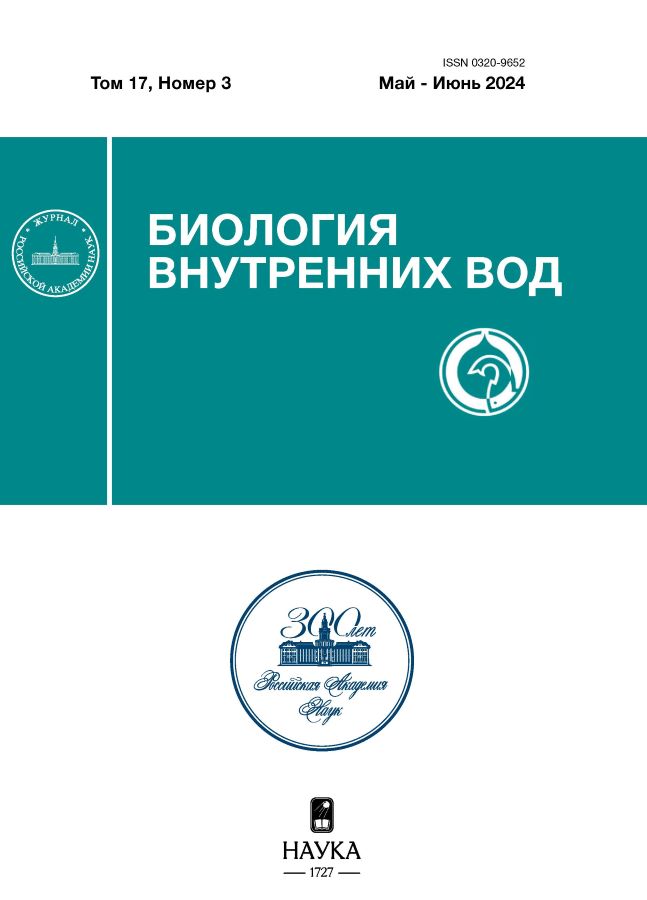Ecological and Anatomical Characteristics of riverbank Plants of Water Currents and Waterbodies of the Lower Amur Region
- Autores: Tsyrenova D.J.1
-
Afiliações:
- Pacific National University
- Edição: Volume 17, Nº 3 (2024)
- Páginas: 410-417
- Seção: БИОЛОГИЯ, МОРФОЛОГИЯ И СИСТЕМАТИКА ГИДРОБИОНТОВ
- URL: https://ruspoj.com/0320-9652/article/view/670108
- DOI: https://doi.org/10.31857/S0320965224030053
- EDN: https://elibrary.ru/ZPOZID
- ID: 670108
Citar
Texto integral
Resumo
The results of an ecological and anatomical study of plants in the coastal shallows of rivers and lakes o the Lower Amur region are presented in order to identify their resistance and adaptability to the conditions of existence. 7 stenotopic species were studied. It was revealed that the vegetative organs of plants are characterized by a combination of typical hydromorphic and specific adaptive features. Adaptation of species to sandy-silty shallow habitats is carried out due to histological transformations of the main tissues. The narrow specialization of species does not affect the typical structure of plant organs and does not lead to a simplification of their internal structure. The studied species are more characterized by signs of terrestrial micromorphology (sclerification, suberinization and cutinization of tissues) rather than hydrophytic. It is assumed that a specific complex of shallow flora was formed mainly from terrestrial species.
Texto integral
Sobre autores
D. Tsyrenova
Pacific National University
Autor responsável pela correspondência
Email: duma@mail.ru
Rússia, Khabarovsk
Bibliografia
- Барыкина Р.П., Чубатова Н.В. 2005. Экологическая анатомия цветковых растений: учебно-методическое пособие. М.: Тов-во науч. изданий КМК.
- Баркалов В.Ю. 1992а. Род Стоножка — Centipeda Lour. // Сосудистые растения советского Дальнего Востока. Л.: Наука. Т. 6. С. 164.
- Баркалов В.Ю. 1992б. Род Симфолокарпус — Symphyllocarpus Maxim. // Сосудистые растения советского Дальнего Востока. Л.: Наука. Т. 6. С. 164.
- Батурина Н.С. 2019. Закономерности организации речных экосистем: ретроспектива становления современных концепций (обзор) // Биология внутр. вод. № 1. С. 3. https://doi.org/10.1134/SO320965219010042
- Ворошилов В.Н. 1968. Об отмельной флоре умеренных областей муссонного климата // Бюлл. Главн. бот. сада АН СССР. Вып. 68. С. 45.
- Иванина Л.И. 1991а. Род Авран — Gratiola L. // Сосудистые растения советского Дальнего Востока. Л.: Наука. Т. 5. С. 289.
- Иванина Л.И. 1991б. Род Линдерния — Lindernia All. // Сосудистые растения советского Дальнего Востока. Л.: Наука. Т. 5. С. 291.
- Иванина Л.И. 1991в. Род Лужница — Limosella L. // Сосудистые растения советского Дальнего Востока. Л.: Наука. Т. 5. С. 292.
- Кожевников А.Е. 2001. Сытевые (сем. Cyperaceae Juss.) Дальнего Востока России (современный таксономический состав и основные закономерности его формирования). Владивосток: Дальнаука.
- Крюкова М.В. 2013. Сосудистые растения Нижнего Приамурья. Владивосток: Дальнаука.
- Нечаев А.П., Гапека З.И. 1970. Эфемеры меженной полосы берегов нижнего Амура // Бот. журн. Т. 55. № 8. С. 1127.
- Нечаев А.П., Нечаев А.А. 1973. Coleanthus subtilis (Tratt.) Seidl. в приамурской части ареала // Бот. журн. Т. 58. № 5. С. 404.
- Цвелев Н.Н., Пробатова Н.С. 2019. Злаки России. М.: Тов-во науч. изданий КМК.
- Цыренова Д.Ю., Касаткина А.П. 2013. Экологическая структура флоры прибрежных отмелей реки Амур вблизи Хабаровска (Нижний Амур) // Уч. зап. Забайкальского гуманитарно-педагогического ун-та им. Н.Г. Чернышевского. Серия “Естественные науки”. Чита: Изд-во Забайкальск. гос. ун-та. Вып. 48. № 1. С. 58.
Arquivos suplementares














